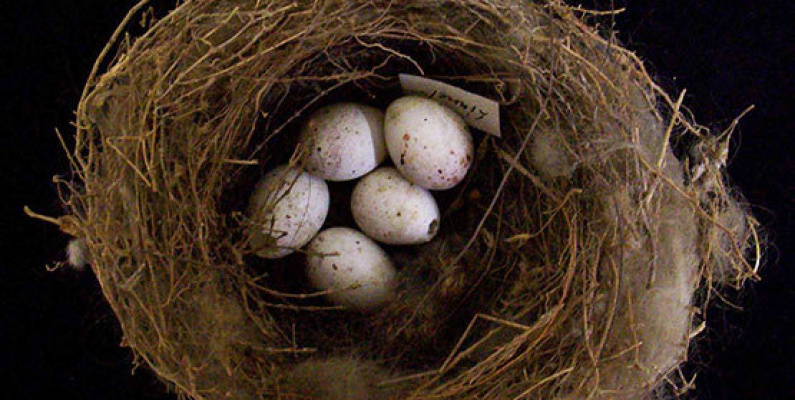
Eggs found on land are laid by birds, reptiles, and some mammals like platypuses and echidnas. Eggs come in many different shapes and sizes and are often hidden in nests or have pigments and patterns for camouflage, as they are vulnerable to predation. As the Easter holidays approach, the Otago Museum is a great place to go “hunting” for eggs.
Otago Museum’s egg collection is made up of eggs from approximately 370 species. Studying eggs provides insights into the life history for both living and extinct species [1], so it's important that the Museum keeps good records about where and when each egg was found, and of course, what species laid it.
Animal Attic is home to an impressive display of bird eggs, from the small eggs of the fantail and silvereye songbirds to the big, round egg of the ostrich. Recent research suggests that how well a bird can fly may affect the evolution of the shape of its eggs [2]. These researchers note that albatrosses and hummingbirds, both exceptional in flight, have similar shaped eggs, although the albatross egg is considerably larger.

Image: Stout-legged moa (Euryapteryx gravis) egg. Otago Museum Collection. AV9032. By Fiona Glasgow © Otago Museum.
The Otago Museum also cares for two extremely rare, complete moa eggs currently displayed in the Southern Land, Southern People gallery and Nature galleries. They are some of the biggest eggs in New Zealand and part of only a handful of moa eggs that exist in the world [3]. They were found in the early 1900s in Central Otago and are prized taoka for New Zealand.
[1] Montanari, S (2018). "Cracking the egg: the use of modern and fossil eggs for ecological, environmental and biological interpretation". Royal Society Open Science 5(6) https://royalsocietypublishing.org/doi/full/10.1098/rsos.180006
[2] Stoddard et al (2017). "Avian egg shape: Form, function, and evolution". Science. 356(6344):1249-1254. http://science.sciencemag.org/content/356/6344/1249
[3] Gill, B (2005). "Precious Eggs". New Zealand National Geographic. Issue 73, www.nzgeo.com/stories/precious-eggs/
Top image: Nest with greenfinch (Carduelis chloris) eggs. Otago Museum Collection. AV10471. © Otago Museum.
